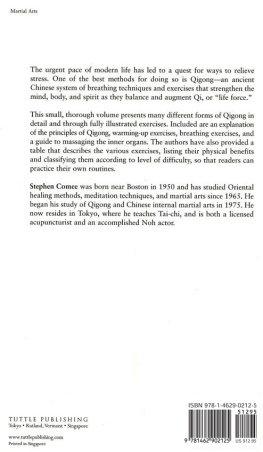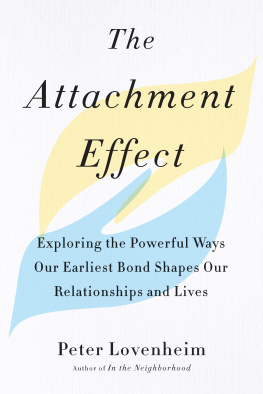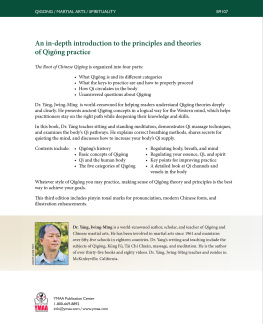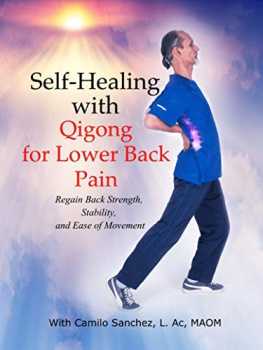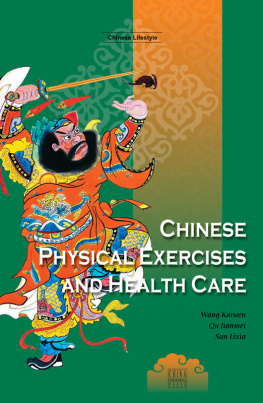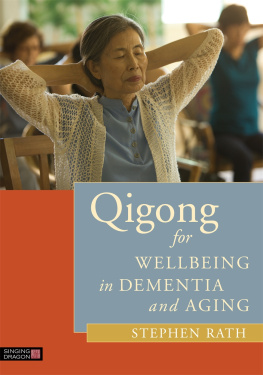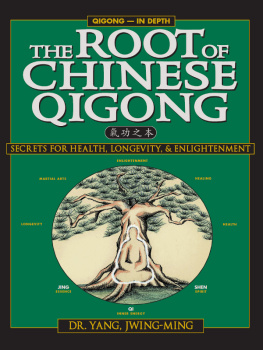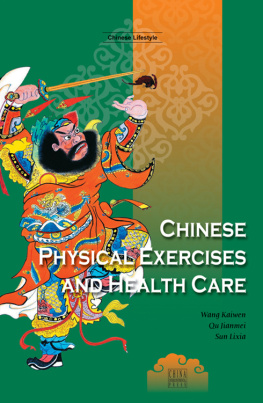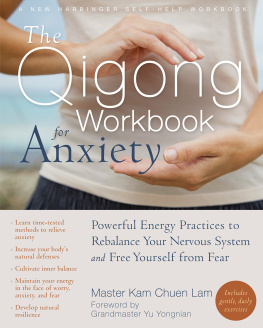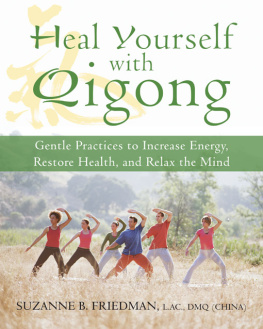


Beginning Qigong

External Forms (Wai-gong)
PRINCIPLES
The Chinese have developed numerous external forms of exercise over the centuries. Among the three most popular of them, which can still be seen performed in parks in Asia in the early morning, are the Everyday Stretching Qigong ( Yijinjing, lit.: muscle/bone-changing exercises), based upon the movements of farmers in growing and harvesting rice, which are included here; the Eight Brocade Exercises ( Baduanjin, lit.: eight-section silk), which are not included, as they are already very popular in the West; and the Five Animal Forms (Wuqinxi), which are based upon animal movements and may be too difficult for beginners.
To perform these external forms correctly, practitioners must have the qualities of silk brocade; that is, they must be firm but supple, which is achieved by alternately tensing and relaxing the muscles. This is one of the most fundamental principles in all Chinese exercises, and has been found to be a great reliever of mental stress and bodily fatigue.
Another basic principle that all Chinese exercises share is concentration upon the lower abdomen. In Chinese medicine, this area is called the dantian , and is seen as the main storehouse of Qi, the life-force energy that flows throughout the body and maintains health. Qi can be stored up and then used in conjunction with the martial arts, giving greater power to the punches of masters who employ it.
Concentration upon the dantian is very conducive to relaxing the whole body, as it helps enhance the circulation of blood throughout the body; it also makes abdominal breathing a little easier and naturally shifts the body's center to a lower position, making the body's equilibrium more stable. Thus, if it is difficult for you to breathe abdominally, it is more important to focus upon the dantian, as the act of doing so will enable you to gradually shift from thoracic to abdominal breathing. In any case, the breathing should always be slow, even, and natural, as any irregularity of the breath will disrupt the natural flow of Qi.
In order for these exercises to have the maximum effect on your life, there are a few guidelines that are important to follow:
1. Do not eat for about an hour before or after practicing.
2. Do not practice too strenuously if you have a cold; also, beginners who tend to sweat a lot may be prone to catching a cold if there is a draft.
3. Do not start or finish abruptly; even after finishing slowly, do not undertake any vigorous activity right away, as it could cause headache and discomfort.
4. Do not practice immediately after taking a bath (the bath would be better after practice).
5. Try to relax completely before beginning to practice.
6. Try to calm the breath.
7. Practice regularly, and look for gradual improvement over time.
WARMING-UP QIGONG EXERCISES

(Dantian-gong dong-gong)
These exercises belong to a group of movements called Qiangshen qigong in Chinese, which means "body-strengthening exercises," although it might be more accurate to describe them as exercises that build up one's Qi. There are many different sets of these exercises practiced, but those given in this volume, the Warming-up Qigong exercises, or Dantian-gong dong-gong (literally, "moving exercises to fill the dantian with Qi"), consist of half a dozen relatively easy movements that beginners often learn before going on to more difficult types of exercises. Remember, however, that it is not the actual movement itself that is difficult, it is the correct performance of the movement in conjunction with proper regulation of the breath and the flow of Qi. Since they are so elementary, they have been included here as warming-up exercises that you might like to learn (or do) before moving on to the more difficult Everyday Stretching Qigong exercises that follow. These warming-up movements can be used for both external and internal forms. For internal forms, much greater emphasis and concentration should be placed upon controlling and directing the flow of Qi while performing them than is recommended here.
There are many forms of Qigong practice. Some are very quiet and are performed while seated; others are more active and seem more like exercises to Westerners. The Warming-up Qigong given here consists of a few simple postures that are each held for a short period of time. They are basically active exercises to help facilitate the free flow of Qi throughout the body, and also to build up your storehouse of Qi. Through practicing them, you can gather and store your own Qi and develop latent potential to your advantage. Because the Qi energy is made to flow more freely, these exercises often have the effect of relaxing tightened muscles, especially in the shoulders.
When performing this Warming-up Qigong set, you should perform each exercise 3-5 times (as recommended in the instructions below), gradually working up to as many as 50 repetitions. The successful performance of the exercises should take about 5 minutes at first, but if you are practicing only this set you should gradually increase the number of repetitions so that it takes you anywhere from 15 to 45 minutes to do the set, which will help you to gain the greatest benefit. However, when you intend to do the Everyday Stretching Qigong exercises immediately after this set, a 5-10-minute set will suffice.
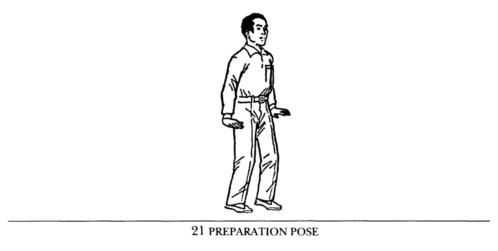
Preparation Pose (Qi shi)
Stand erect, with feet about shoulders' width apart. Hold your arms at your sides, but raise the hands slightly (Fig. 21). Relax and drop the shoulders and chest (rounding them), and look straight ahead; keep the mouth closed, with the teeth slightly touching and the tip of the tongue lightly touching the upper palate. Place your attention upon the dantian, or lower abdomen, and gently contract the anal sphincter.
1. Beginning Pose (Yubei-shi)
Bend both knees and place the hands on the thighs, bending the body forward like a bow; close the eyes, and concentrate on keeping the dantian , the body's energy storehouse, filled with Qi (Fig. 22).
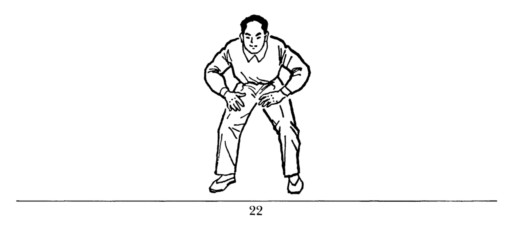
Remaining in this position, practice abdominal breathing. Inhale slowly through the nose, letting the abdomen fill up with air. As you continue to inhale, feel the air filling up the lungs and stretching the back like an expanding balloon. When you have taken a full breath, gently hold the breath for 7-8 seconds, or as long as is comfortable, remembering to keep the anal sphincter contracted. When ready, open the mouth and exhale slowly through it, letting the stomach pull back in naturally. After exhaling, stop breathing for another 7-8 seconds before resuming this exercise.

